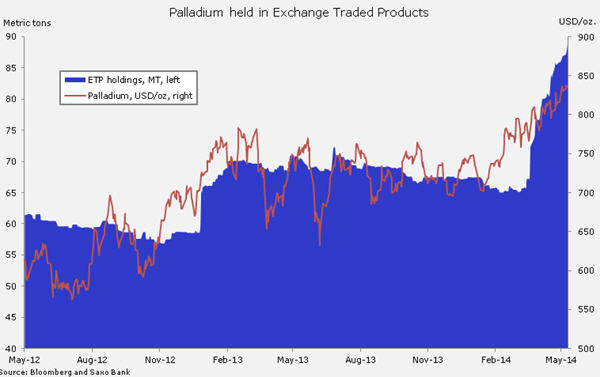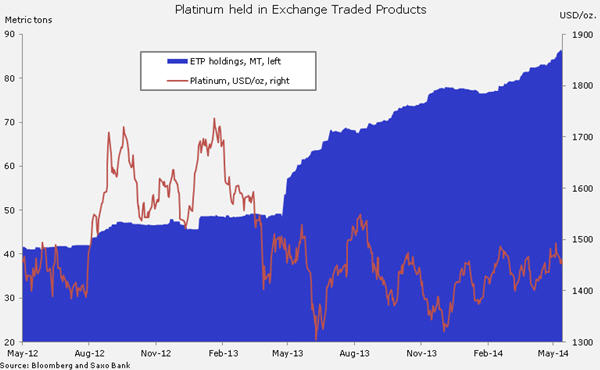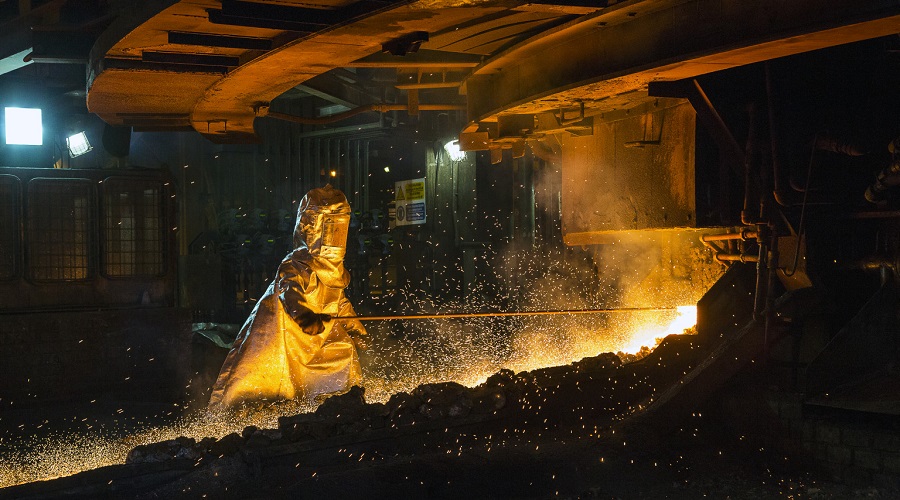CHARTS: Platinum, palladium ETF holdings jump to record highs

Labour negotiations at South Africa’s PGM mines are once again poised on a knife edge after producers slightly upped an earlier offer to the more than 70,000 workers who’ve been on strike for more than four months.
Workers at the world’s three largest platinum and palladium producers, Anglo American Platinum (LON:AAL), Impala Platinumm (OTCMKTS:IMPUY) and Lonmin (LON:LMI), went on strike January 23.
The latest offer from management calls for a monthly increase of R800 ($75) a month every year for five years for those at the bottom of the pay scale and smaller hikes for those that earn more. The R800 equates to 16% pay increase for the first year for those earning the minimum of some R4,500 ($420) a month currently.
The new offer comes after failed mediation talks through the country’s labour court and overseen by the newly-installed Minister of Mineral Resources Ngoako Ramatlhodi.
The Amcu union said they would respond to the latest offer which does not differ much from previous proposals without canvassing workers. Boss of the militant union Joseph Mathunjwa last week described the Labour Court proposal as “repackaging of the same old offer” reports Johannesburg paper Business Day.
According to a website set up by producers the companies’ have lost combined revenue of R20.6 billion (some $1.9 billion) while striking workers have lost nearly $900 million in forfeited wages.
Roughly 10,000 ounces of platinum production and 5,000 ounces of palladium are lost each day the strike drags on. Even when strikers do return to work it would take up to three months to restart production.
The strike and a stand-off between the West and Russia over Ukraine have pushed the platinum price up 4.4% this year, while the palladium price has surged 16% this year to three-year highs.
South Africa and Russia combined account for close to 80% of global supply of palladium and 70% of platinum output which are mainly used to clean emissions in automobiles.
The price of June palladium was down slightly on Monday to $834 an ounce, not far off a three-year high. Palladium hit a record high of $865 in February 2011.
July platinum pulled back over 1% to $1,436 an ounce and down is now down sharply from the $1,493 level hit just last week over renewed hopes for an end to the strike and the easing of tensions with Russia following the mostly peaceful presidential election in Ukraine.
A huge factor boosting the the palladium price has been the launch of two new physical palladium-backed exchange traded funds in Johannesburg in late March.
Ole Hansen, head of commodity strategy at Saxo Bank said in a squawk on Monday precious metals prices suffered “a major setback” during the final week of May as global equity markets and the dollar rose, “further reducing the need for alternative investments.”
Holdings in palladium-backed ETFs nevertheless rose to fresh record highs of more than 85 tonnes or over 3 million ounces as at 30 May following the launch of two physical palladium funds listed in Johannesburg a few weeks after the strike kicked off. Holdings in a platinum ETFs are also at an all-time high.
Industry consultants Johnson Matthey Plc said in recent report platinum consumption will beat supply by 1.22 million ounces while the palladium shortfall will widen to 1.61 million ounces, from 371,000 ounces last year and the eighth year in a row of deficits.
That would constitute the largest market deficits ever, based on Johnson Matthey data going back to 1975 for platinum and 1980 for palladium.
Image of Johannesburg Stock Exchange by Pavel Tcholakov
{{ commodity.name }}
{{ post.title }}
{{ post.date }}



Comments